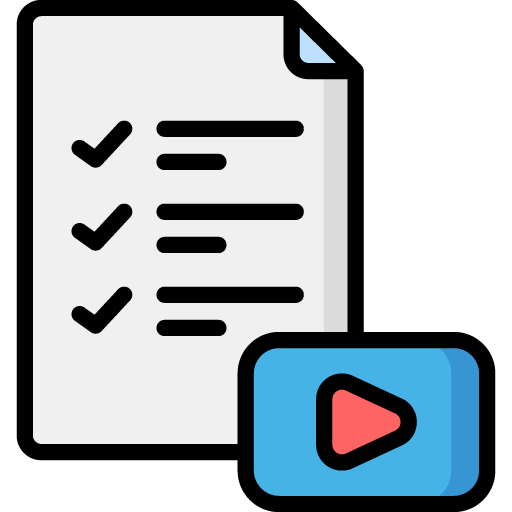Creating a YouTube video today is about more than just recording great content. It’s also about making that content discoverable and accessible. One of the most underused and highly impactful tools for boosting your video SEO and broadening your audience is the use of transcriptions and closed captions. In this blog, we’ll dive deep into why these features are essential, how they work, and how to use them effectively to grow your channel.
Transcriptions and Closed Captions
How Adding Transcriptions and Captions Can Improve Video SEO and Accessibility
Why Transcriptions and Captions Matter
At their core, transcriptions and captions turn your video’s spoken content into text. But the benefits of doing this go far beyond convenience.
- Improved SEO: Search engines can’t watch videos, but they can index text. By transcribing your videos and including captions, you’re providing Google and YouTube with a textual representation of your content. This opens up keyword indexing opportunities and improves your chances of showing up in relevant searches.
- Greater Accessibility: Captions make your videos accessible to the deaf and hard-of-hearing community. They also help non-native speakers better understand your content. Accessibility isn’t just good practice—it’s good business.
- Enhanced User Experience: Viewers in noisy environments, or those watching without sound, can still engage with your content. It increases your video’s usability and user retention.
- Better Engagement Metrics: Videos with captions tend to have longer watch times and higher engagement. Viewers are more likely to stick around when they understand the content.
The Difference Between Captions and Transcriptions
Before diving into the implementation, let’s clear up the terminology:
- Captions are time-synchronized text that appears on-screen while the video plays. They can be closed (toggle on/off) or open (always visible).
- Transcriptions are the full textual record of what is said in your video. They are usually not time-coded and are presented as a script or document.
How Captions Improve SEO
Captions provide a direct line to your video’s content. Here’s how they help:
- Keyword Targeting: The text in your captions includes your natural spoken keywords. YouTube uses this to better understand the context of your video and match it to search queries.
- Increased Watch Time: When viewers stay longer on your videos because they can read along, it signals quality to YouTube.
- More Accurate Search Results: Captions allow search engines to surface your content more accurately, especially when people use voice search or search by specific phrases.
- Enhanced Indexing: Your video becomes indexable for multiple search intents, which means you can show up for a wider range of queries.
How Captions Boost Accessibility
Accessibility isn’t just an ethical move—it’s an essential part of digital inclusivity.
- Hearing Impairments: Roughly 5% of the world’s population has disabling hearing loss. Captions ensure they can consume and enjoy your content.
- Language Barriers: Captions can help non-native speakers follow along more easily, especially when the speaker has an accent or uses idiomatic expressions.
- Learning Styles: Some people absorb information better by reading than listening. Captions help them stay engaged.
When your content is more accessible, you increase the size of your potential audience.
How Transcriptions Support Your Strategy
Transcriptions are versatile tools that can serve multiple purposes:
- Content Repurposing: Turn your transcription into a blog post, social media snippet, or downloadable PDF.
- Improved Metadata: You can pull quotes or key takeaways to include in your video’s description and tags.
- Search Optimization: Include long-tail keywords naturally without having to overstuff your video title or description.
- Time-Saving for Viewers: Some viewers prefer to skim the content. A transcription allows them to find what they need quickly.
Adding Captions to YouTube Videos
YouTube offers a few different options for adding captions:
- Auto-Captions: YouTube automatically generates captions for most videos. While this is a great starting point, the accuracy can vary.
- Manual Uploads: You can upload your own .srt (SubRip Subtitle) file, which ensures accuracy and timing.
- Manual Entry in YouTube Studio: You can enter captions manually and adjust timing directly within the platform.
Best Practice: Always review YouTube’s auto-captions and make corrections to ensure clarity and professionalism.
Tools for Creating Captions and Transcriptions
Several tools can help streamline the captioning and transcription process:
- Descript: Edit video by editing text. Automatically transcribes and offers a clean interface for captioning.
- Rev.com: Offers human-generated transcriptions and captions for higher accuracy.
- Otter.ai: Great for real-time transcription with strong AI capabilities.
- VEED.io: An easy-to-use video editing platform that includes subtitle features.
These tools range from free to premium, so you can find one that suits your budget.
Formatting Tips for Effective Captions
To get the most out of your captions:
- Keep it Short: Break long sentences into readable chunks.
- Timing Matters: Ensure the captions sync closely with speech.
- Use Punctuation: It aids understanding and adds clarity.
- Identify Speakers: When there are multiple voices, use labels to differentiate.
- Avoid Clutter: Don’t overload your video with text. Keep it readable.
Legal and Compliance Considerations
In some regions, adding captions is more than a best practice—it’s a requirement:
- ADA Compliance (U.S.): If your content is public and serves an educational or governmental purpose, accessibility features may be legally required.
- Platform Policies: YouTube and other platforms increasingly favor content that adheres to accessibility standards.
Being proactive protects your content and broadens your audience.
How to Include Transcriptions on YouTube
There are a few ways to use your transcription to benefit your video:
- Include It in the Description: This helps with SEO but be careful not to exceed YouTube’s character limits.
- Pin It in a Comment: Pin a comment with key takeaways and a link to the full transcription.
- Link to a Blog Post: Turn your transcript into a blog and link to it from your video description.
Measuring the Impact of Captions and Transcriptions
If you’re going to invest time into this process, it helps to track your results. Here’s what to watch:
- Increased Watch Time: Captions help viewers stay engaged longer.
- Higher Click-Through Rates: Clear, SEO-rich descriptions and tags informed by your transcript can improve visibility.
- More Shares: Accessible content is more likely to be shared.
- Positive Feedback: Look for comments that mention helpful captions or easy-to-follow structure.
Final Thoughts: Why This Should Be Part of Every Strategy
If you’re serious about growing your YouTube channel, you can’t afford to ignore transcriptions and closed captions. They elevate your content, extend your reach, and enhance your professional reputation.
You put a lot of effort into your video content—make sure it works harder for you by ensuring it’s searchable, inclusive, and audience-friendly.
Whether you’re creating tutorials, vlogs, reviews, or interviews, captions and transcriptions are the unsung heroes that can make or break your video’s impact.
Start small. Try adding captions to your next video. Monitor the metrics. Refine your process. And watch how something so seemingly small makes a big difference.
Your Next Steps:
- Review your last five videos—do they have accurate captions?
- Choose a tool like Descript or Otter.ai and start transcribing.
- Add key phrases from your transcript to your description and tags.
- Monitor your analytics.
Make captions and transcriptions part of your content checklist. Your audience (and the algorithm) will thank you.







 Edit Your Footage
Edit Your Footage
Leave a Reply